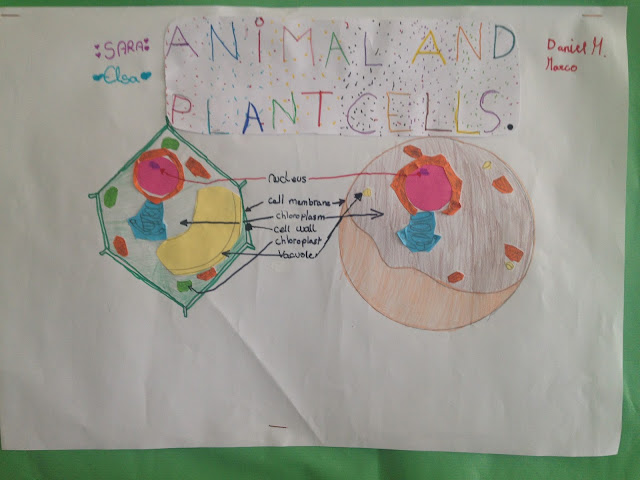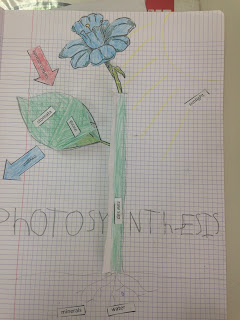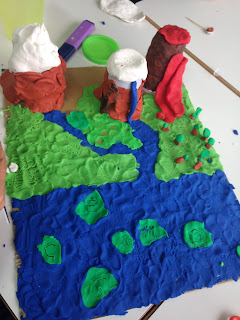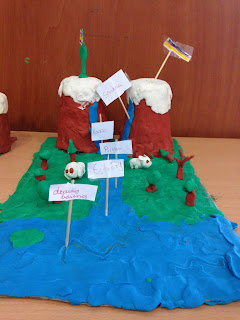Hello everyone!
I would like to present to you Kahoot! This is a tool for playing educational games. I have prepared a game for you to review this unit of Science. You will need to download the app on your phones or tablets and then click on this link (https://kahoot.it/challenge/0696154) or enter the pin: 0696154
Good luck!
lunes, 4 de diciembre de 2017
viernes, 24 de noviembre de 2017
Countable and uncountable nouns
Hello everyone!
Here you have the chart of countables and uncountables. I have added "some" and "any" to remind you how to use them. Remember practicing writing sentences.
You'll also find some online exercises below for further practice.
Enjoy :)
Here you have the chart of countables and uncountables. I have added "some" and "any" to remind you how to use them. Remember practicing writing sentences.
You'll also find some online exercises below for further practice.
Enjoy :)
lunes, 20 de noviembre de 2017
ECOSYSTEMS REVIEW GAMES
Hello everyone!
By clicking here you will be able to review this unit of Natural Science. I do not recommend you to use the functions "escribir" and "gravedad", as you are asked to type exactly what I wrote, so many times it counts your answer as wrong even if it's right.
Especially useful are the functions:
- FICHAS (to study before playing)
- APRENDER (a multiple-choice game)
- ORTOGRAFÍA (to practice spelling)
- PROBAR
- COMBINAR
Enjoy!
By clicking here you will be able to review this unit of Natural Science. I do not recommend you to use the functions "escribir" and "gravedad", as you are asked to type exactly what I wrote, so many times it counts your answer as wrong even if it's right.
Especially useful are the functions:
- FICHAS (to study before playing)
- APRENDER (a multiple-choice game)
- ORTOGRAFÍA (to practice spelling)
- PROBAR
- COMBINAR
Enjoy!
miércoles, 11 de octubre de 2017
Living things!
Hello everyone!
Here you have pictures of the amazing drawings you did of the animal and plant cells.
I especially liked how well you worked as a team, well done!!
Here is the cell rap! Can you sing the chorus???
Here you have pictures of the amazing drawings you did of the animal and plant cells.
I especially liked how well you worked as a team, well done!!
Here is the cell rap! Can you sing the chorus???
And last but not least, here are pictures of the kefir yogurt Soleá brought. It was so interesting to see how the bacteria transformed the sheep milk into yogurt overnight, wasn't it?
This is the substance with the bacteria and yeasts in it.
The first step was to mix the bacteria with some sheep milk and leave it working overnight.
The next day, we filtered the already-made kefir, we put some sugar in it and... we tried it!!
It tastes a little bit like cheese, it was delicious!!
So, next time you think bacteria are bad for us (or disgusting), remember that some bacteria are really beneficial and useful for us!!
Enjoy your weekend :)
miércoles, 3 de mayo de 2017
Semana cultural
Hello everyone!
Here I upload a video that our colleague Tristán made showing all the wonderful work you have done for Cultural Week.
Congratulations!
Here I upload a video that our colleague Tristán made showing all the wonderful work you have done for Cultural Week.
Congratulations!
martes, 4 de abril de 2017
Mass and volume
Hello everyone!!
The other day we learned about mass and volume. We learned that mass is measured in grams (gr.) or kilograms (kg.) and that volume is measured in millilitres (ml.) or litres (l.).
To find out the mass of different objects we used a SCALE. We had to put the object on one side of the scale and different weights on the other side to try and make it balanced.
It was difficult to measure the pencil cases because some of them were really heavy!!
For measuring the water in the jug, we had to measure the full jug first, and then empty it to find out how heavy was the jug alone and then subtract!
To find out the volume of different objects we used a MEASURING JUG. First we had to measure the volume of water and then submerge the object to see if the volume changed. We saw that it grew! so we subtracted and found out the volume of the objects.
This is called the ARCHIMEDES PRINCIPLE.
Here are some pictures of the process!!
The other day we learned about mass and volume. We learned that mass is measured in grams (gr.) or kilograms (kg.) and that volume is measured in millilitres (ml.) or litres (l.).
To find out the mass of different objects we used a SCALE. We had to put the object on one side of the scale and different weights on the other side to try and make it balanced.
It was difficult to measure the pencil cases because some of them were really heavy!!
For measuring the water in the jug, we had to measure the full jug first, and then empty it to find out how heavy was the jug alone and then subtract!
To find out the volume of different objects we used a MEASURING JUG. First we had to measure the volume of water and then submerge the object to see if the volume changed. We saw that it grew! so we subtracted and found out the volume of the objects.
This is called the ARCHIMEDES PRINCIPLE.
Here are some pictures of the process!!
jueves, 2 de marzo de 2017
Pollination
Hello kids!
We are learning about plant reproduction in class now. Remember there are two kinds of plants: FLOWERING PLANTS (they reproduce sexually) and NON-FLOWERING PLANTS (they reproduce asexually).
FLOWERING PLANTS produce SEEDS and there are two kinds:
- ANGIOSPERMS (they develop a FRUIT with SEEDS inside)
- GYMNOSPERMS (they have really small flowers and develop their SEEDS inside CONES)
(Some flowering plants also reproduce asexually using STOLONS, for example the strawberry plant)
NON-FLOWERING PLANTS reproduce using SPORES. There are two kinds:
- FERNS
- MOSSES
Watch this video to remember how pollination works and the parts of a flower:
We are learning about plant reproduction in class now. Remember there are two kinds of plants: FLOWERING PLANTS (they reproduce sexually) and NON-FLOWERING PLANTS (they reproduce asexually).
FLOWERING PLANTS produce SEEDS and there are two kinds:
- ANGIOSPERMS (they develop a FRUIT with SEEDS inside)
- GYMNOSPERMS (they have really small flowers and develop their SEEDS inside CONES)
(Some flowering plants also reproduce asexually using STOLONS, for example the strawberry plant)
NON-FLOWERING PLANTS reproduce using SPORES. There are two kinds:
- FERNS
- MOSSES
Watch this video to remember how pollination works and the parts of a flower:
Enjoy! 😊
martes, 28 de febrero de 2017
Comparatives and Superlatives
Hello everyone!
Very soon we will have a surprise exam on COMPARATIVES and SUPERLATIVES. These explanations will help you remember (even though we practice everyday in class):
Very soon we will have a surprise exam on COMPARATIVES and SUPERLATIVES. These explanations will help you remember (even though we practice everyday in class):
If you think you are ready, check how much you know by playing these games:
Comparatives and superlatives game (here there are 2, you have to scroll down and click on "Game")
Good luck!!😏
lunes, 27 de febrero de 2017
Photosynthesis
Hello everyone!
Here you have the videos we watched in class to learn about photosynthesis. Watch them again because they're really useful to understand how photosynthesis works!
Here you have the videos we watched in class to learn about photosynthesis. Watch them again because they're really useful to understand how photosynthesis works!
And here you have the photosynthesis song!
And last but not least... here I upload some pictures of your plant diagrams. Remember to label the parts correctly so that this helps you to study photosynthesis properly!
miércoles, 15 de febrero de 2017
Valentine's day
Hello kids!
Here I post pictures of the very nice hearts you made for Saint Valentine's Day. We learned many adjectives that describe positive characteristics of people, for example:
Here I post pictures of the very nice hearts you made for Saint Valentine's Day. We learned many adjectives that describe positive characteristics of people, for example:
nice
creative
optimistic
handsome
pretty
empathic
smiling
hard-working
smart
kind
good-hearted
good classmate
brave
friendly
etc
Remember it's very important to see the positive characteristics of people... we all have many!!
And here is the song we learned:
domingo, 12 de febrero de 2017
River basin models!
Hello kids!
Here I upload the pictures of the wonderful models you made last Friday. You should be very proud of how well you worked as a team! I know I am!
We used a piece of cardboard, some plastic cups and plasticine to make the model and then some toothpicks and strips of paper to label its parts.
Here is how you started:
Here I upload the pictures of the wonderful models you made last Friday. You should be very proud of how well you worked as a team! I know I am!
We used a piece of cardboard, some plastic cups and plasticine to make the model and then some toothpicks and strips of paper to label its parts.
Here is how you started:
And here are the finished models:
I hope you enjoyed making these and working as a team. Keep up the good work! ;)
Suscribirse a:
Entradas (Atom)
































































